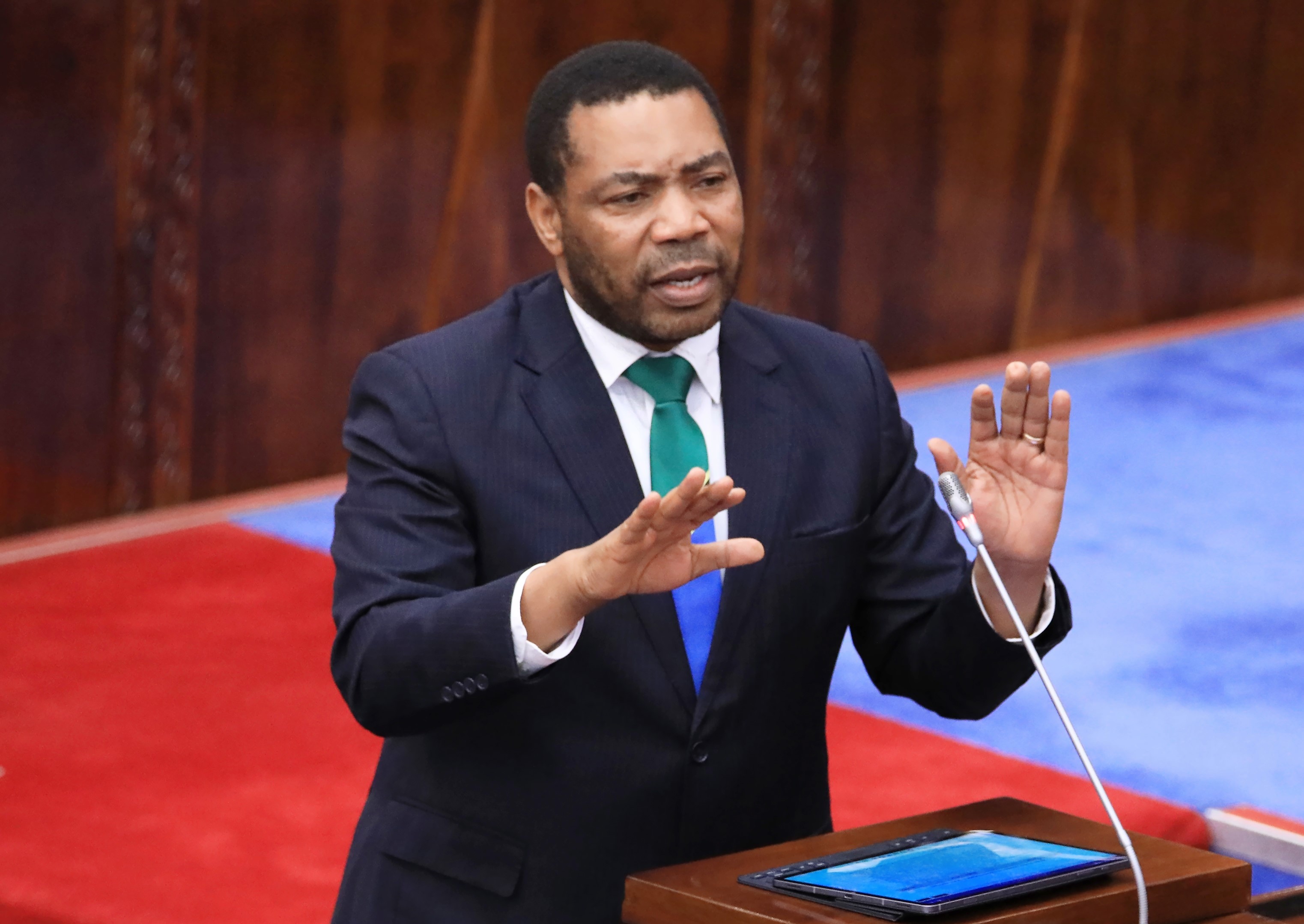Prime
E.Africa to spend $23 billion on debt servicing

Tanzania's Finance minister Mwigulu Nchemba presents the country's 2025/26 Budget in Parliament in Dodoma on June 12, 2025. PHOTO | EDWIN MJWAHUZI
What you need to know:
- With the biggest debt in the region, Kenya will pay the highest amount in debt servicing, followed by Uganda., with Tanzania paying the least among the three founding EAC members
Dar es Salaam. A mounting debt burden across East Africa is increasingly weighing on public finances, with new data showing that citizens in Tanzania, Kenya and Uganda will collectively shoulder debt servicing costs of around Tsh60 trillion (about $23 billion) in the upcoming 2025/26 fiscal year.
The ballooning repayments by the three founding members of the East African Community (EAC) are significantly limiting fiscal space for critical investments in social services, infrastructure and employment creation.
With the highest debt in the region, Kenya will pay the highest amount in debt servicing, followed by Uganda. Tanzania will pay the least among the three founding EAC members.
An analysis of the national budgets for the new financial year reveals that Kenya will allocate Ksh1.37 trillion (approximately Tsh27.4 trillion) to debt servicing—an 11 percent increase from the previous year.
The amount represents 31.9 percent of Kenya’s total proposed budget of Ksh4.29 trillion (about Tsh85.38 trillion).
Kenya’s debt-to-GDP ratio remains elevated at 66 percent—well above the 55 percent sustainability threshold for developing economies.
In response, the government has unveiled a Medium-Term Debt Management Strategy aiming to reduce the ratio to 55 percent by 2028.
The strategy prioritises concessional borrowing, promotes alternative financing options such as diaspora and green bonds and seeks to improve transparency through integrated debt-tracking systems.
Uganda follows with a debt servicing budget of Ush26 trillion (Tsh18.27 trillion), accounting for a staggering 36 percent of its total Ush72 trillion budget (around Tsh50.69 trillion).
Meanwhile, Tanzania will spend Tsh14.22 trillion—25.2 percent of its Tsh56.49 trillion budget—for the same purpose.
Combined, the three countries will spend more on debt servicing than Tanzania’s entire annual budget—and more than Uganda’s entire national spending plan. The Tsh60 trillion figure also surpasses 70 percent of Kenya’s entire budget.
Tanzania maintains that its debt remains sustainable. Finance Minister Dr Mwigulu Nchemba told Parliament last week that a Debt Sustainability Analysis (DSA) conducted in October 2024 found the country’s debt at 40.3 percent of GDP—well below the 55 percent threshold.
External debt stood at 23.6 percent of GDP, with an external debt-to-exports ratio of 123.8 percent, also within the 180 percent limit.
“The Government will continue to ensure that debt remains sustainable by strengthening domestic revenue collection and allocating commercial loan proceeds to growth- and export-oriented projects,” said Dr Nchemba.
As of April 2025, Tanzania’s public debt stood at Tsh107.7 trillion—comprising Tsh72.94 trillion in external debt and Tsh34.76 trillion in domestic borrowings.
Still, economists caution that the upward debt trajectory poses risks. Dr Isack Safari of Saint Augustine University of Tanzania warned that although current ratios are within acceptable limits, the pace of borrowing is a concern.
He urged the government to prioritise productive investments and reassess the necessity of every loan.
Dr Mwinuka Lutengano of the University of Dodoma pointed out that over Tsh11 trillion is allocated annually to debt repayments—funds that could be directed to health, education, or infrastructure.
He underscored the need to align expenditure with improved revenue collection and advocate for cost-effective financing such as public-private partnerships (PPPs).
“Repaying debt is inevitable, especially when loans finance development. But sustainability depends on whether those investments generate returns,” Dr Mwinuka said.
Dr Daudi Ndaki of Mzumbe University added that while borrowing can spur development, the key is ensuring that investments stimulate economic activity and job creation.
“Despite current debt servicing burdens, East Africa still has significant potential for growth,” he said.
The Chairperson of the Parliamentary Budget Committee, Mr Oran Njeza (CCM–Mbeya Rural), called for a shift towards innovative financing options, including municipal and infrastructure bonds, to reduce reliance on external debt.
He also recommended borrowing in a mix of currencies to shield the national debt from exchange rate shocks and advocated expanding the domestic capital market.
Analysts also highlighted global risks—rising interest rates, foreign exchange volatility and dwindling access to concessional loans—as threats to regional debt sustainability.
In echoing a recent IMF assessment, Uganda’s Ministry of Finance considers its public debt sustainable in the medium and long term, though there is a moderate risk of debt distress.
This outlook is buoyed by robust GDP growth prospects and upcoming oil production, which is expected to boost domestic revenue.
Budget priorities across the three countries reveal contrasting strategies: Tanzania is focusing on enhancing domestic production, clean energy, healthcare financing and import substitution; Kenya has significantly increased funding for defence and debt reduction; while Uganda’s budget shows increased allocations to youth, artists and the elderly and security personnel ahead of elections.



